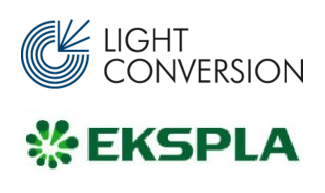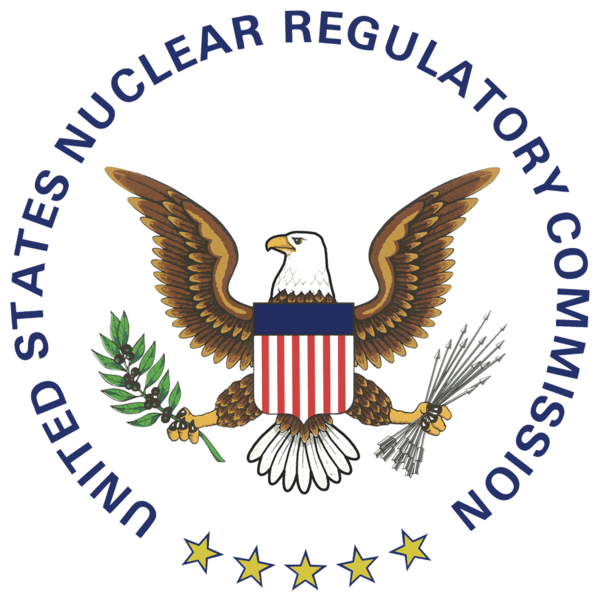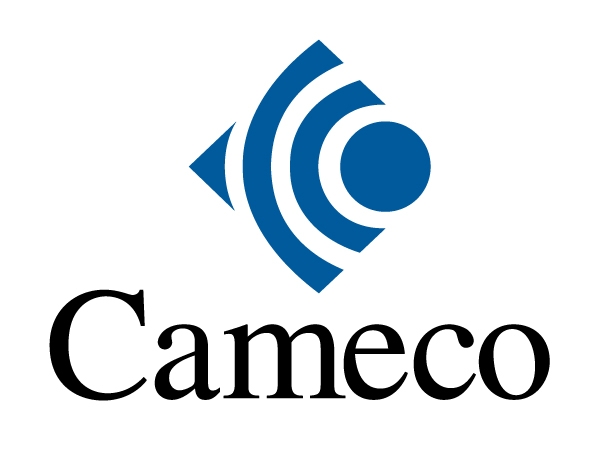I have often blogged about the problem with nuclear waste. Fission reactors produce spent nuclear fuel that is radioactive and can be dangerous for thousands of years. To date, the best solution to the accumulating spent nuclear fuel from the world’s nuclear power reactors is to bury it in deep underground geological repositories. Unfortunately, siting and constructing such repositories are very difficult and there have only been test repositories created during the seventy plus years of the Nuclear Age. The soonest that the U.S. will have one is 2050. The temporary solution to the spent nuclear fuel problem is to store the used fuel assemblies in steel cylinders encased in concrete called “dry casks”. These dry casks have their own problems. Now scientists are working on ways to speed up radioactive decay which could reduce the time required for nuclear waste to be lose most of its radioactivity.
Dr. Artūras Plukis is Head of Experimental Nuclear Physics Laboratory at the Center for Physical Sciences and Technology in Vilnius, Lithuania. He said, “Currently, the disposal of nuclear waste is comprised of either storing the waste in containers on above-surface level or burying them underground, depending on the decay period of the radioactive material. This method is raising safety concerns, as some of the waste is disposed not too far from densely populated areas, and highly radioactive waste has to be safely stored for up to tens of thousands of years.”
Light Conversion and Ekspla, two Lithuanian laser technology companies, have developed a very powerful, very fast laser called the SYLOS. The SYLOS high-density ultra-short pulse laser system may be able to accelerate the decay of radioactive isotopes in spent nuclear fuel and other radioactive wastes. Darius Gadonas is Head of the Scientific Laser Systems Division at Light Conversion. He said, “We do believe that lasers like SYLOS can be adapted to solve the nuclear waste issue globally without leaving it for future generations to deal with. How soon this could be achieved will depend on the political will of governments, since lasers and infrastructure of this kind could cost up to billions of euros per unit.”
Gadonas said, “There are now 44 laser industry-related companies in Lithuania, and most of them are located in Vilnius. The Lithuanian-made lasers take up more than 50 percent of the global market for the ultra-short pulse lasers. The lasers made in our country are used at NASA, CERN, and countless technologies companies, such as IBM, Hitachi, Toyota, and Mitsubishi. Finally, 90 of the world’s top 100 universities are using lasers made by scientists in Lithuania.”
The pulses from SYLOS are used to accelerate electrons to relativistic velocities. When these highly energetic electrons hit a target of solid matter, they generate powerful electromagnetic gamma rays. These gamma rays are able to induce fission in unstable nuclei such as the radioactive isotopes in nuclear wastes. The isotopes produced by such fission have significantly shorter half-lives than the isotope which were forced to fission by the gamma rays. This means that amount of time nuclear waste needed to be isolated can be significantly reduced.
Blog
-

Radioactive Waste 400 – Lasers Being Developed That Can Accelerate Radioactive Decay
-

Geiger Readings for Jul 20, 2019
Ambient office = 120 nanosieverts per hour
Ambient outside = 87 nanosieverts per hour
Soil exposed to rain water = 87 nanosieverts per hour
Finger grapes from Central Market = 94 nanosieverts per hour
Tap water = 129 nanosieverts per hour
Filtered water = 112 nanosieverts per hour
-

Nuclear Reactors 700 – The Nuclear Regulatory Commissioon Is Considering Changing Regulatory Procedures For Nuclear Power Plant Inspection
On July 16th of this year, the Nuclear Regulatory Commission (NRC) published Recommendations for enhancing the reactor oversight process. They spent the last year in a consultation process to develop the report including public meetings. The NRC claimed that the suggested changes “will result in the staff performing an appropriate level of oversight with less regulatory burden and expenditure of resources by focusing oversight on issues of greater safety significance.”
The report contains recommendations for three parts of the inspection process. They suggest removing and revising requirements in the assessment process, revising sample size and resource estimates for some baseline inspection procedures, and, finally, revising the process for determining Emergency Preparedness Areas.
Maria Korsnick is the CEO of the Nuclear Energy Institute (NEI). She said, “The Reactor Oversight Process SECY has just been released to the public and NEI is reviewing it now. We look forward to the Commission’s decision, and applaud the NRC staff effort to systematically evaluate the decades-old ROP to ensure that it reflects a more robust understanding of the current performance of the US nuclear fleet. The health and safety of our workers and the public always have been and always will be paramount. Our outstanding performance as an industry is due to an exceptional culture of safety at the nation’s nuclear power stations and a strong, independent regulator.”
The NEI website says that the organization is dedicated to ensuring only the highest safety standards. However, they go on to say that some regulations have become “too cumbersome” and new technology that could have a dramatic impact on nuclear safety is “mired in antiquated processes.”
In the middle of the 1990s, the NRC overhauled and updated its approach to nuclear regulations which, according to the NEI, increased industry and regulatory efficiency. But, it says, “the nuclear energy industry has evolved since then, and regulations need to evolve as well. Streamlining regulations does not mean compromising on safety. On the contrary: smarter regulations can help nuclear plant owners and operators allocate time and resources to areas that most impact safety.”
Members of the House Appropriations Committee (HAC) have warned against “moving ahead with dramatic changes to NRC safety protocols without meaningful public input.” The leaders of the HAC sent a letter to the Chairwoman of the NRC. The letter said, “To ensure nuclear power provides safe, reliable, emission-free energy, it is imperative for the NRC to uphold strong regulatory standards. That is why we are disturbed by the consideration of these far-reaching changes to the NRC’s regulatory regime without first actively conducting robust public outreach and engagement.”
The HAC has requested that the NRC hold a period for public comment prior to the commissioners voting on any change to the Reactor Oversight Process. The HAC has the responsibility for funding the federal government’s “vital activities to keep the United States safe, strong, and moving forward.” The NRC report was published on the Agencywide Documents Access and Management System (ADAMS) which is the NRC’s official library and database. -

Geiger Readings for Jul 19, 2019
Ambient office = 104 nanosieverts per hour
Ambient outside = 114 nanosieverts per hour
Soil exposed to rain water = 117 nanosieverts per hour
Scallion from Central Market = 98 nanosieverts per hour
Tap water = 79 nanosieverts per hour
Filtered water = 74 nanosieverts per hour
-

Nuclear Reactors 699 – U.S. Government Debating Creating Quotas For Import Of Foreign Uranium – Part 3 of 3 Parts
Part 3 of 3 Parts (Please read Parts 1 and 2)
“With operations on both sides of the border, Cameco also sees tremendous value in increasing cooperation between the United States and Canada to address critical mineral issues and strengthen security of supply on a North American, rather than strictly national, basis.”
He praised the recent commitment by President Trump and Canadian Prime Minister Justin Trudeau to work on a joint action plant on critical mineral collaboration. Gitzel sees uranium mining as being a major component of the strategy that the two leaders have committed to.
The biggest customer of Cameco is the U.S. which accounted for about a quarter of its annual sales by volume in 2018. The company said that the U.S. investigation into the possibility of uranium import quotas had been a cloud hanging over the international uranium market which was already facing serious problems. There is still some uncertainty over what the Working Group will propose but the President’s decision was seen as a positive outcome.
Boss Resources in Western Australia said that Trump’s decision had been praised by U.S. nuclear utilities. They were concerned that import restrictions would raise the price of uranium in a struggling market. The company said, “Boss believes this outcome is very positive for Australian producers and the uranium market as a whole, as the declined restrictions may have created long-term distortions in the market which could have further impacted the recovery of the uranium market.” Boss went on to say that Trump’s decision is “expected to assist unlocking buying activity” from U.S. utilities and will probably support a uranium price increase.
There are some wild cards in the uranium market section that may influence supply and price in the future. The Russians are committed to the development of a closed fuel chain that includes breeding additional nuclear fuel in fast breeder reactors. Since the Russians are one of the few nations strongly committed to domestic and international expansion of nuclear power reactors, they may offer to build reactors powered by recycled fuels which would lock nuclear utilities in other countries into Russian fuel contracts. The Russians have already shown that they are inclined to use the threat to cut off supplies of fuels such as natural gas for political leverage in other countries.
Another interesting development is the creation of systems for extracting uranium from sea water via cheap polymers which can be recycled. This is a rapidly developing field with the recent announcement of a new extraction technique which is well suited to separating specific uranium isotopes such as U-235 which is the active ingredient in nuclear fuel and nuclear weapons. The latest research indicates that uranium extraction from sea water can match or beat the cost of uranium mining on land. If this technology delivers on its promise, then any country with an ocean coastline will be able to extract all the uranium they would need to run many nuclear reactors for centuries. This would bring an end to uranium mining and fuel recycling with major disruptions of the current global nuclear fuel supply chain. -

Geiger Readings for Jul 18, 2019
Ambient office = 98 nanosieverts per hour
Ambient outside = 122 nanosieverts per hour
Soil exposed to rain water = 122 nanosieverts per hour
Beefsteask tomato from Central Market = 84 nanosieverts per hour
Tap water = 119 nanosieverts per hour
Filtered water = 111 nanosieverts per hour
-

Nuclear Reactors 698 – U.S. Government Debating Creating Quotas For Import Of Foreign Uranium – Part 2 of 3 Parts
Part 2 of 2 Parts (Please read Part 1 first)
The President wrote, “The Working Group shall examine the current state of domestic nuclear fuel production to reinvigorate the entire nuclear fuel supply chain, consistent with United States national security and non-proliferation goals.”
The Working Group is required to report back to the President within ninety days of the date that the Memorandum was issued. The report was to include findings and recommendations to further enable domestic nuclear fuel production if this is needed.
Maria Korsnick is the President and CEO of the Nuclear Energy Institute. She “applauded” the President’s decision that uranium imports were not a threat to national security at this time. She said, “Quotas on uranium imports would have a crippling impact on the economic health of the US nuclear fleet. The formation of the Nuclear Fuel Working Group to support the front-end of the domestic fuel cycle aligns with one of NEI’s recommendations to address the very real challenges faced by the US uranium miners and other fuel cycle suppliers.”
Energy Fuels is the biggest uranium producer in the U.S. They issued a statement that said that their petition to the federal government had been very successful even thought the President disagreed with the main point of the etition. They said that the President, “acknowledged he has significant concerns regarding the impact of uranium imports on the national security with respect to domestic mining. A fuller analysis of national security considerations with respect to the entire nuclear fuel supply chain is necessary at this time.” The company said that it looked forward to working with the Working Group to “ensure the United States will have a viable uranium mining industry that can fulfil national security needs now and into the future.”
Mark Chalmers is the President and CEO of Energy Fuels. He said, “We commend President Trump for recognizing the crucial importance of nuclear energy, the importance of the entire nuclear fuel supply chain and the importance of the domestic uranium mining industry as a key component of that chain.”
Energy Fuels has claimed that it owns and operates some of the lowest cost in situ recovery and conventional uranium mines in the U.S. It is also the owner of White Mesa Mill which is located in Utah. The White Mesa Mill is the only conventional uranium mill in the U.S. which is licensed and operating.
Cameco is a Canadian uranium mining company which said it was pleased with Trump’s decision with respect to Section 232. Tim Gitzel is the President and CEO of Cameco. He made a public statement to the effect that uranium supplied by Cameco to the U.S. has never been a threat to U.S. national security. He said that the establishment of the Working Group may “broaden the range of options” that could be considered to support the uranium industry in the U.S. beyond the “trade-related remedies” permitted under Section 232.
Gitzel went on to say, “Cameco will participate in the efforts of this Working Group in any way we can. As a long-term commercial producer, employer, supplier and investor in the US uranium and nuclear energy sectors, we want to see this industry succeed and grow.”
Please read Part 3
